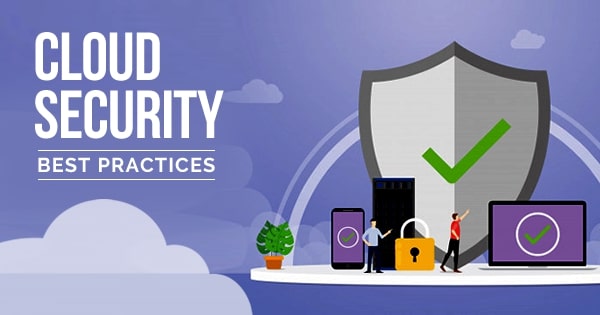Cloud Security Best Practices for Businesses
In today’s rapidly evolving digital landscape, businesses are increasingly turning to cloud computing to enhance operational efficiency, scalability, and collaboration. While the advantages of cloud adoption are clear, the need for robust cloud security measures cannot be overstated. As organizations migrate their data and applications to the cloud, it is imperative to prioritize the protection of sensitive information and ensure business continuity. In this blog post, we will delve into key cloud security best practices that businesses should implement to mitigate risks and safeguard their digital assets.

1. Emphasizing Cloud Security:
The cornerstone of a secure cloud environment lies in placing a strategic emphasis on cloud security, cloud computing security, and the broader concept of security in the cloud. Understanding these terms is crucial for organizations as they navigate the complexities of the digital landscape.
2. Data Encryption:
A fundamental practice in ensuring cloud security is the implementation of robust data encryption. Encrypting data both in transit and at rest adds an additional layer of protection, making it arduous for unauthorized parties to access sensitive information. Leveraging encryption tools provided by cloud services is essential to safeguard data effectively.
3. Multi-Factor Authentication (MFA):
Enhancing user authentication is paramount in the cloud environment. Implementing Multi-Factor Authentication (MFA) adds an extra layer of security by requiring users to provide multiple forms of identification before accessing data or applications. This significantly reduces the risk of unauthorized access, even if login credentials are compromised.
4. Regular Security Audits:
Proactive identification and mitigation of potential vulnerabilities are achieved through regular security audits. These assessments, focusing on cloud security, enable organizations to stay ahead of emerging threats and ensure that their cloud infrastructure remains resilient in the face of evolving cybersecurity challenges.
5. Employee Training and Awareness:
Human error remains a significant factor in security breaches. Educating employees about the importance of security in the cloud, the risks associated with phishing attacks, and best practices for maintaining secure access can significantly reduce the likelihood of security incidents.
6. Secure APIs:
In the realm of cloud environments, Application Programming Interfaces (APIs) play a pivotal role in enabling seamless communication between different services. Securing APIs is crucial to prevent unauthorized access and potential data breaches. Implementing proper authentication mechanisms and regularly updating API security measures are vital components of a robust cloud security posture.
7. Regular Software Updates:
A simple yet effective cloud security practice is keeping all software and systems up-to-date. Regular updates often include patches for known vulnerabilities, enhancing the overall security of cloud infrastructure. Businesses should adopt a systematic approach to update all software and systems within their cloud environment.
8. Incident Response Planning:
Despite all precautions, security incidents can still occur. Having a well-defined incident response plan is crucial for minimizing the impact of a security breach. This plan should include steps for identifying and containing the incident, notifying relevant parties, and implementing corrective measures to prevent future occurrences.
9. Cloud Service Provider (CSP) Assessment:
Choosing a reputable Cloud Service Provider (CSP) is the first step in ensuring a secure cloud environment. Businesses should thoroughly assess the security measures implemented by their CSP, including data encryption, access controls, and compliance with industry regulations. Regularly reviewing and updating the agreement with the CSP ensures that security standards are continually met.
Conclusion:
In the dynamic landscape of technology, as businesses continue to harness the benefits of cloud computing, prioritizing cloud security is non-negotiable. By following these cloud security best practices—emphasizing encryption, implementing MFA, conducting regular audits, investing in employee training, securing APIs, ensuring software updates, planning for incidents, and carefully selecting CSPs—organizations can build a resilient defense against cyber threats. Proactivity is the key to safeguarding the future of business in the cloud, ensuring a secure and sustainable digital presence.






